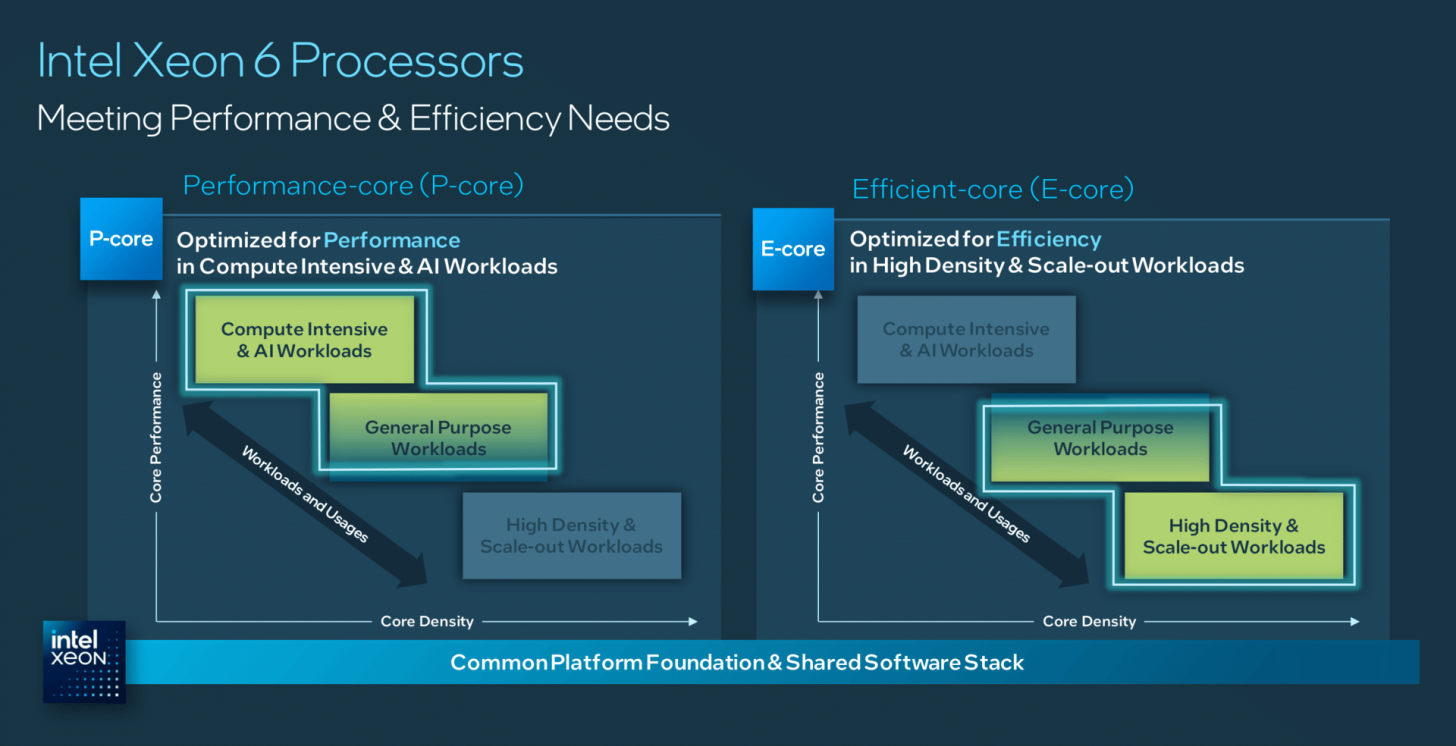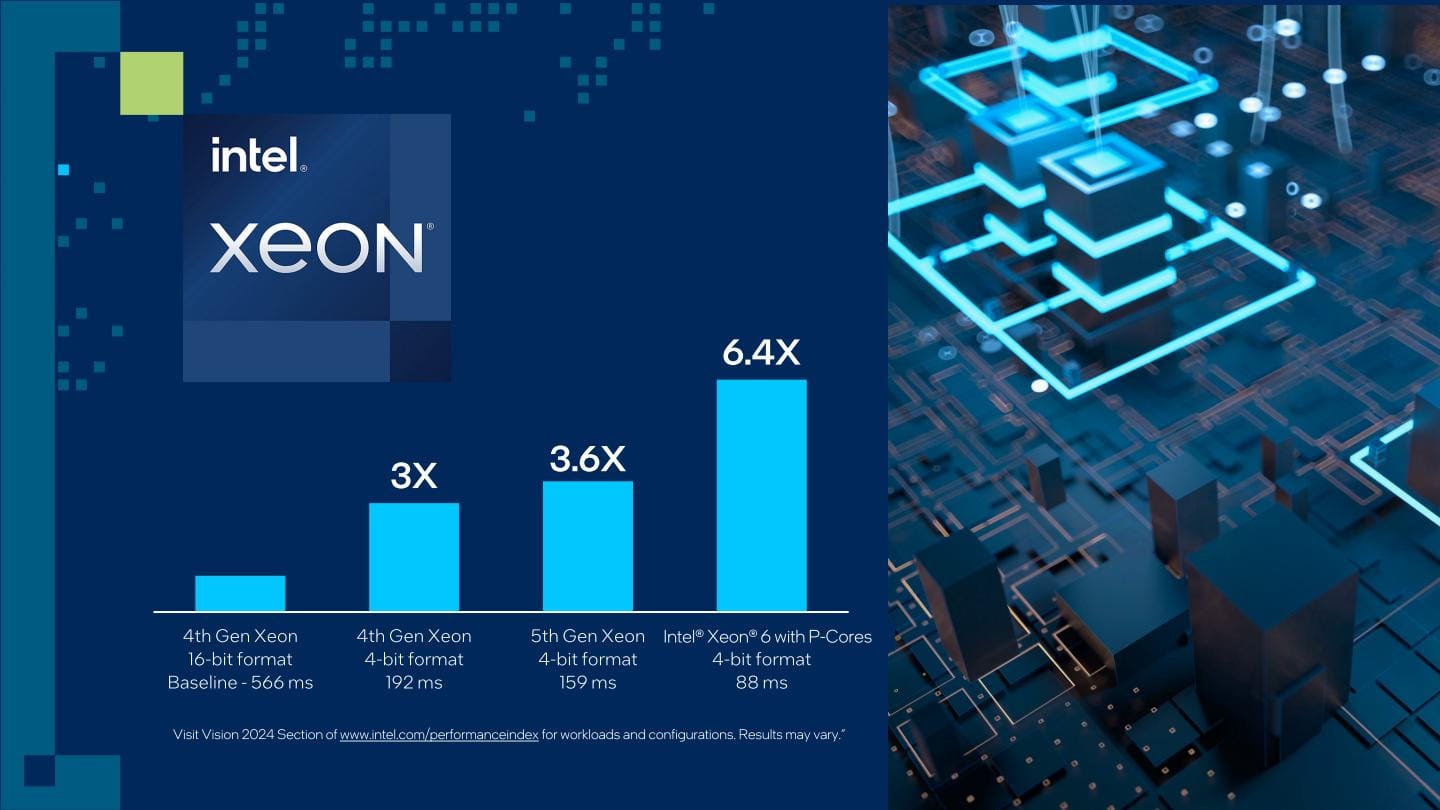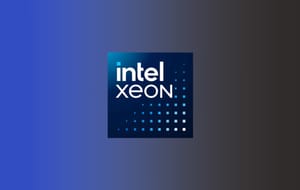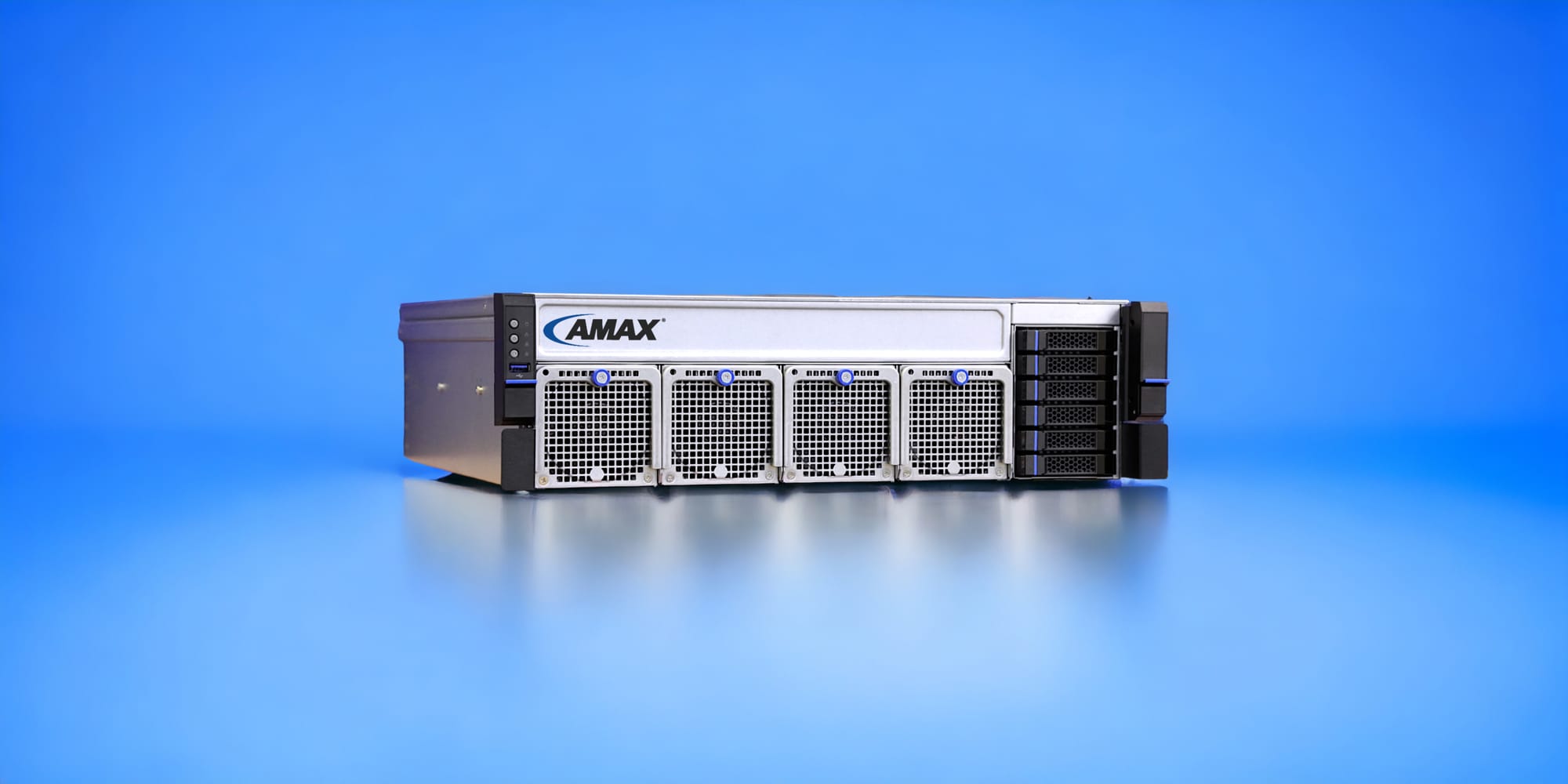Intel has unveiled its latest line of data center processors offering a more simple naming convention—the Intel® Xeon® 6 Processor. The new chip will improve upon the previous 5th Gen Intel® Xeon® Processors and offer new P-cores and E-cores with enhanced processing power and efficiency. Designed for enterprise ai, data centers, cloud, and edge computing environments.

The difference between Intel E-cores and P-cores
The distinction between E-cores (Efficient cores) and P-cores (Performance cores) caters to different computing needs, optimizing the processors for a variety of tasks and power efficiency levels.
P-cores, or Performance cores, are designed to handle high-performance tasks. These cores are direct successors to previous Intel CPU architectures and are equipped with high clock speeds and the capability for Hyper-Threading. This makes them well-suited for more demanding processes and applications that benefit from faster processing and multitasking capabilities such as HPC, enterprise AI and cloud services.
On the other hand, E-cores, or Efficient cores, are optimized for energy efficiency and are better suited for handling background tasks that require less power. These cores are smaller in size, consume significantly less power compared to P-cores, and operate without Hyper-Threading. The main advantage of E-cores lies in their ability to enhance the overall energy efficiency of the processor, making them ideal for edge devices and for systems where power consumption needs to be minimized.
This hybrid core approach allows Intel's CPUs to balance high performance with energy efficiency, providing a versatile platform that can adapt to a range of workloads by dynamically shifting between the core types based on the task requirements.
Enhanced Efficiency with E-cores
The Intel Xeon 6 processors equipped with Efficient-cores, or E-cores, (previously code-named Sierra Forest), are optimized for high-density large scale workloads.
These processors achieve a 2.4 times improvement in performance per watt and a 2.7 times enhancement in rack density when compared to the 2nd Generation Intel® Xeon® processors. This efficiency allows customers to replace their older systems at a nearly 3-to-1 ratio, significantly reducing energy consumption and supporting sustainability initiatives.

Boosted Performance with P-cores
The Intel Xeon 6 processors featuring Performance-cores, or P-cores, (previously code-named Granite Rapids), are designed specifically for compute intensive and AI workloads.
These processors integrate software support for the MXFP4 data format, which dramatically reduces next token latency by up to 6.5 times compared to the 4th Generation Intel Xeon processors using FP16. This capability enables them to efficiently run advanced GenAI solutions, such as the 70 billion parameter Llama-2 models.
AMAX Solutions with Intel Xeon 6
Edge Solutions for Telco
The growing demands of AI in telecommunications highlight the need for edge solutions equipped with advanced GPUs, higher core counts, and greater thermal design power to effectively manage rising AI workloads.
Open access routers offer service providers flexibility in building transport networks. Featuring Class C timing and diverse interfaces, AMAX AI edge solutions enable strategic deployment of UPF, MEC, and 5G-CP in private 5G/B5G networks.
Our Carrier Grade & short depth 3U (ServMax X-313) and 2U (ServMax X-212) servers, are powered with up to 2x NVIDIA H100 Tensor Core GPUs, custom-built for edge AI. Our solutions are designed for scalability and network efficiency. Key features include the Intel® Xeon® 6 processor on a cutting-edge PCIe 5.0 platform, and on board IPMI.
A Solution for Current and Future AI Demands
The Intel® Xeon® 6 processor is designed to meet the demands of both current and future AI technologies. The processors provide support for GenAI solutions like RAG, enabling businesses to generate specialized results using proprietary data. The launch of E-core processors is set for this quarter, followed closely by the release of the P-core processors.
With the introduction of the Intel Xeon 6, Intel continues to push the boundaries of CPU technology, offering solutions for the next era of AI technologies.



